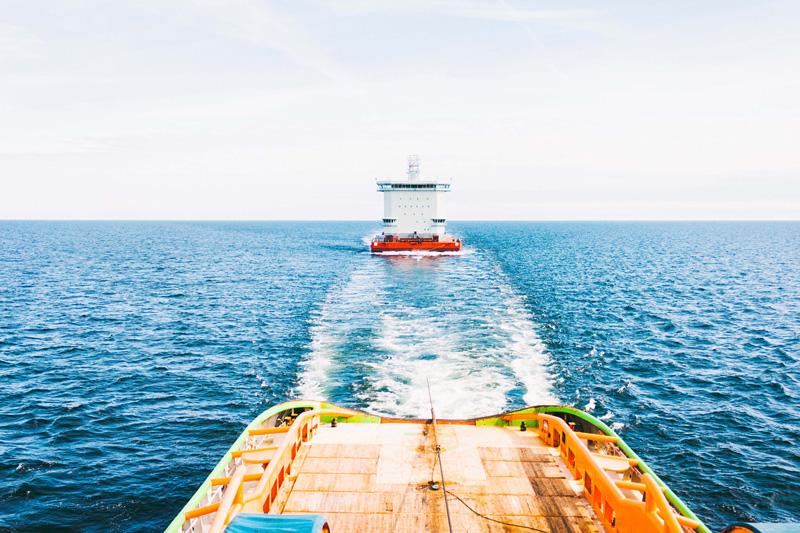Is remote prefabrication of superstructures becoming the preferred turnkey model?
Increasingly more marine and offshore yards and owners are turning to new concepts to increase efficiency in newbuild projects by extending the turnkey scope beyond “full turnkey”. We are talking about full prefabrication of superstructures at a remote location prior to delivery to the yard – it’s the “Prefabricated Superstructure model”. So, what are the perks with this model?
Blog post by Jussi Laimi, Vice President New Sales Accommodation Division at ALMACO
To put it simply, the higher the degree of turnkey, the more projects a yard can handle simultaneously with less internal resources, costs and risks. The Prefabricated Superstructure model enables the shipyard to scale up capacity quickly, which is especially important in times of uncertainty.
With the Prefabricated Superstructure model, the full superstructure is constructed separately from the hull in a different location. When ready, the superstructure is delivered to the shipyard fully outfitted, including steel and all systems inside, and ready to be integrated with the hull. As the superstructure construction is separated from the rest of the ship, delays in surrounding areas and phases does not affect the schedule of the superstructure. Huge schedule benefits can be achieved by constructing the hull and superstructure simultaneously.
By rethinking the split of work and responsibility, owners and yards can minimize risks and increase project efficiency substantially. But is this true for everyone and every project?
What to consider before selecting the remote prefabrication model
Turnkey models are usually chosen to best suit the shipyard’s partner network and facilities. The more resources and facilities are available and the broader the network of partners and suppliers, the less sense it makes to use the Prefabricated Superstructure model. This can apply to the three to five largest shipyards in the world, but for most shipyards resources and space usage need to be optimized. Space and work force aren’t the only resources to consider. If the schedule is tight, prefabrication is the safest choice.

The Prefabricated Superstructure model is most suitable for ferries and smaller passenger vessels like expedition vessels, but it is also applicable for medium-sized cruise vessels. In these vessels the steel structure seldom requires big changes that prevent delivery of the superstructure as a fully separate construction. Other factors, such as the number of simultaneous projects at the shipyard, as well as the overall market situation and order backlog also affect what model to choose.
Easy and successful project management
For a company like ALMACO, projects like these are everyday work and often easier than traditional turnkey projects, where schedule constraints are out of our hands and depend on other stakeholders. Centralizing the responsibility of the accommodation areas, all the way from design and engineering to construction, to one single party makes it easier to control costs, schedules and the project overall. The shipyard can focus on its core strengths consisting of the most demanding components like hull construction, main propulsion and vessel automation.
ALMACO is one of the few companies in the world that has the capability to provide this model globally. Even delivery and hook up can be arranged by ALMACO for the integration of superstructure to the hull.
Summing it up
The prefabricated superstructure model gives the shipyard the opportunity to increase capacity, reduce necessary knowhow of accommodation areas and take benefit of much more aggressive construction schedules. The model might not be beneficial for the shipyards who have all aspects of subcontracting fully developed, but for shipyards entering new vessel segments and projects with high cost-efficiency, the model fits like a glove. It helps smaller and medium-sized shipyards convince owners that they can handle big projects on time, with excellent finish and within the budget.
If you are a shipyard considering this model, my best recommendation is to turn to a reliable and experienced turnkey provider very early on in the process to evaluate the project in question. We see a trend moving towards partnerships with open dialogue on how to build the vessels to maximize efficiency rather than handing over ready-made plans and drawings. The key lies in involving the turnkey provider early enough and taking full advantage of their experience from the very beginning.
If you enjoyed reading this, please share:
About ALMACO Group
ALMACO Group is a full turnkey provider for Newbuilding, Modernization and Lifecycle services of Accommodation, Catering and Laundry areas for the Marine and Offshore industries. ALMACO builds, refurbishes and serves complete interiors and hotel areas of marine vessels and offshore units including galleys, provision stores, refrigeration machinery, laundries, public spaces, as well as complete living quarters. ALMACO works with owners and builders around the world providing full turnkey solutions comprising design and engineering, project management, construction, spare parts, and maintenance. ALMACO was founded in 1998 and has offices in Brazil, Canada, China, Finland, France, Germany, Italy, Singapore, and the USA.



